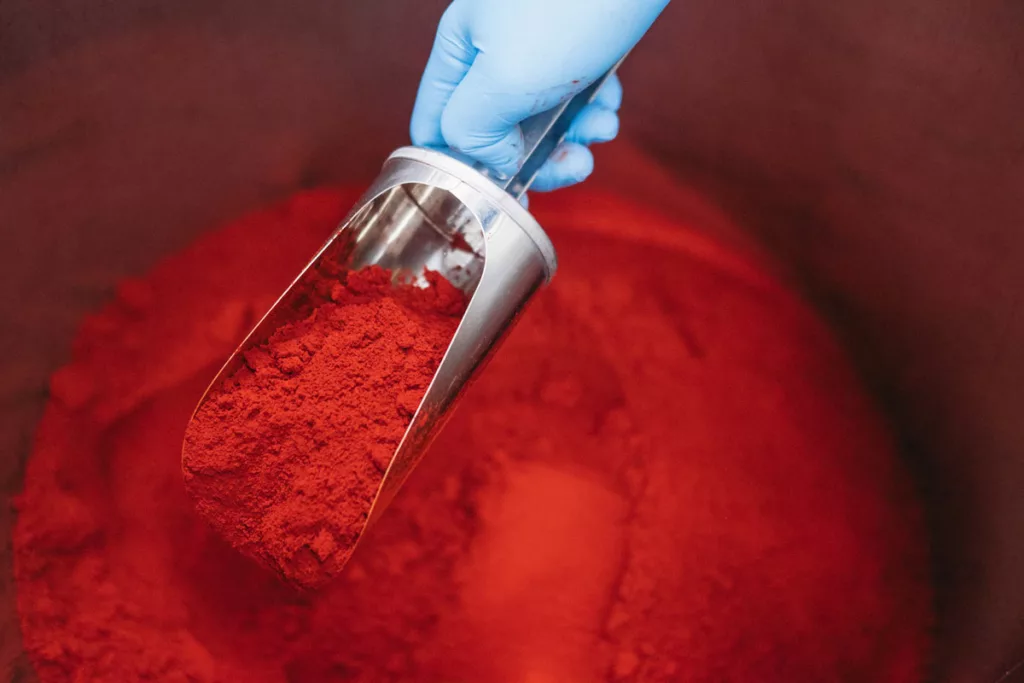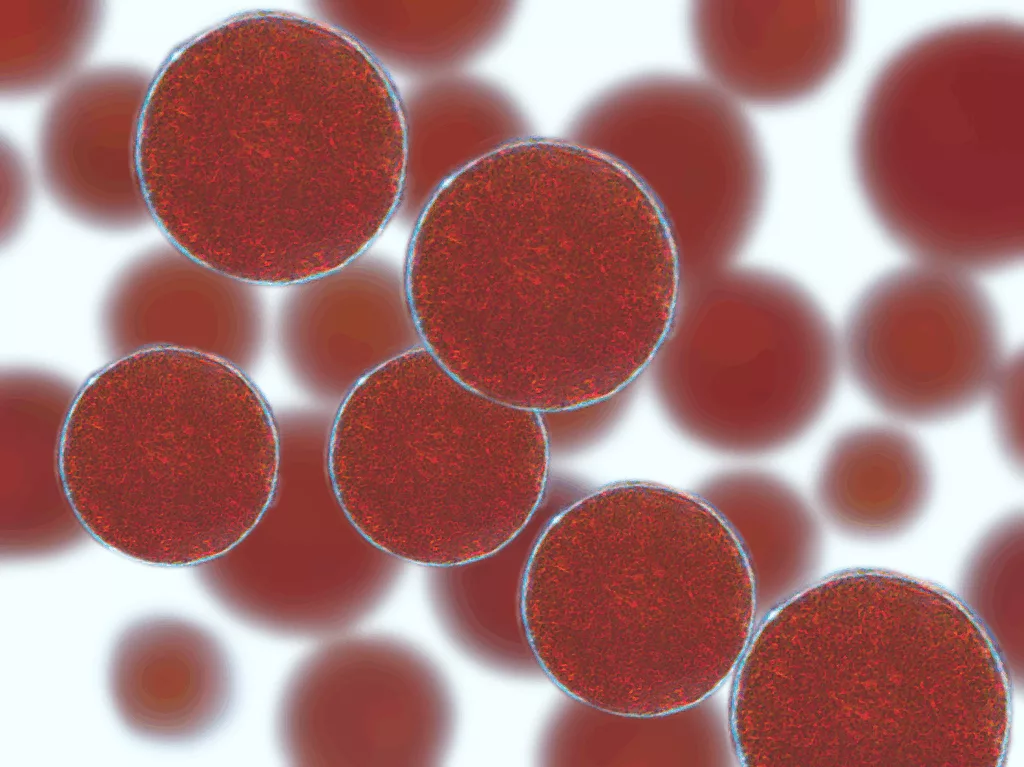What is Astaxanthin?
Astaxanthin from the microalga, Haematococcus pluvialis, is a naturally occurring carotenoid commonly found in freshwater rock pools, ponds, lakes and other water sources worldwide.

In the natural environments, animals rely on their diet to obtain astaxanthin and other carotenoids as they cannot synthesize carotenoids themselves. The most abundant source of astaxanthin in nature is the unicellular green microalga Haematococcus pluvialis.
During harsh conditions as prolonged exposure to intense sunlight, nutrient deficiency or drought, the alga starts to produce and accumulate the antioxidant astaxanthin. It’s a natural survival mechanism to protect lipids and DNA from oxidative stress.
Due to astaxanthin accumulation, the cell turns from a green to a red colour. The algae cells can stay in this dormant red phase for long periods until the environmental conditions get back to optimal, so they turn back to green phase.
This naturally occurring transformation and astaxanthin-induced resilience has inspired scientists to further explore the health potentials of astaxanthin for animals and humans alike.

Natural astaxanthin has a unique molecular structure that makes it significantly more potent than many other antioxidant molecules.
Astaxanthin is the pigment responsible for the pink coloration seen in salmon, shrimps, and flamingos.
Additionally, astaxanthin does not exhibit pro-oxidant activity at high doses like most other antioxidants do. For this, natural astaxanthin is considered a pure and highly effective antioxidant.

The global market for natural astaxanthin derived from the microalga Haematococcus pluvialis is experiencing robust growth. The global astaxanthin market size was valued at USD 2.34 billion in 2023 and is expected to grow at a compound annual growth rate (CAGR) of 17.1% from 2024 to 2030. The increasing demand for astaxanthin is being driven by its expanding use across various industries, including animal feed, nutraceuticals and cosmetics.
This strong upward trend in the astaxanthin market is further supported by growing consumer interest in natural, more sustainable, science-backed ingredients that offer holistic, preventive health benefits. The rising application of “cell-protecting” antioxidants in food and dietary supplements is anticipated to further propel market growth, with countries like Germany, the UK, and Italy leading the way.
Astaxanthin’s popularity is not only due to its powerful antioxidant properties at the cellular level, but also because it offers a wide range of clinically validated tangible benefits that consumers can feel. Its versatile applicability in various formulations has made it a key ingredient in new product developments and scientific research.

